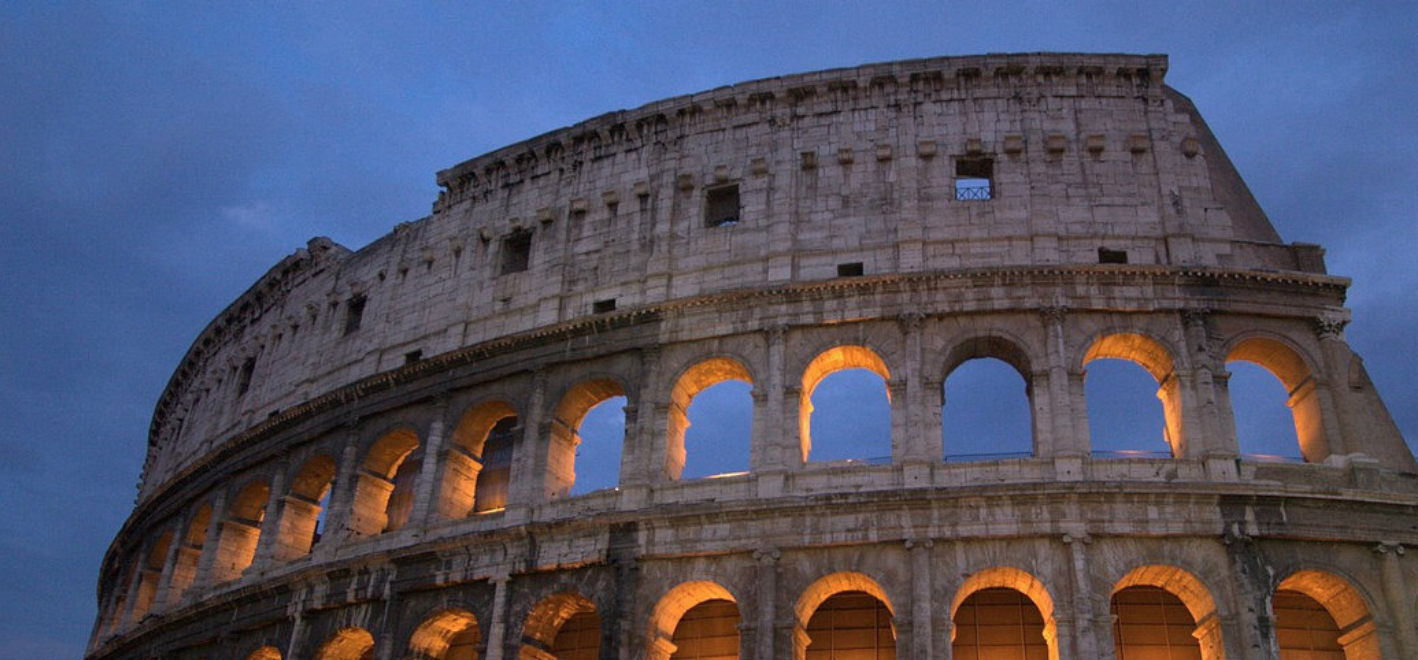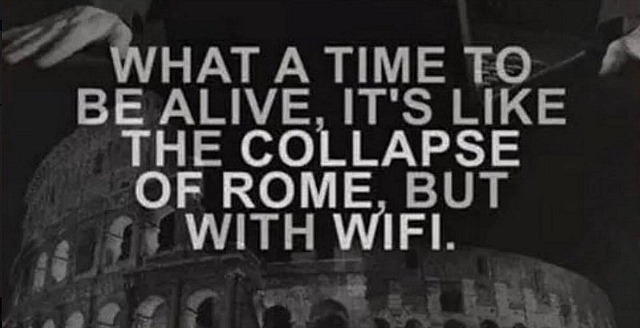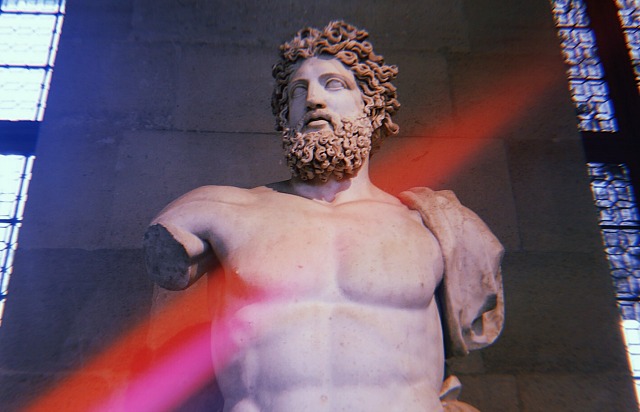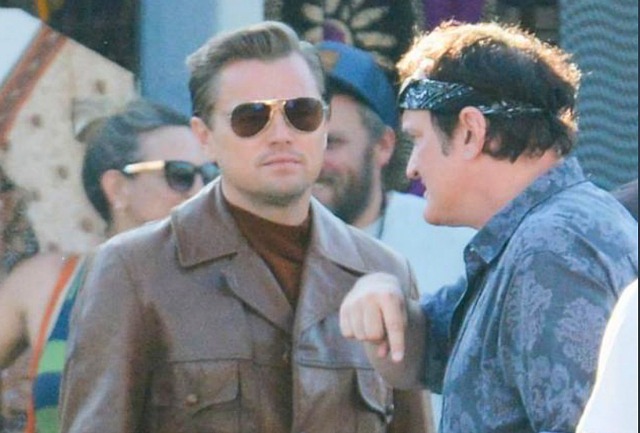An image as simple and penetrating as this one, gently augmented by the sound of cleansing fresh water, reminds that there’s a whole universe of absorption, contemplation and transportation beyond the corporate prison realms of Dwayne Johnson, Chris Pratt, Robert Downey, Jr., et. al. Oh, Lordy, bless the coming award season. Bless it now and forever.
Day: July 25, 2018
Era of Social-Media Shutdowns
The chilling effect of the James Gunn Disney assassination (early-Obama-era tweets can detonate your present-day career) and the ScarJo Rub & Tug thing (cisgender actors cannot play transgender characters) have been kicked around by Deadline‘s Mike Fleming and Peter Bart.
Fleming: “[Industry execs] fear this desire to please loud special interest groups, given a bullhorn by social media, will spread to the point where you couldn’t make Brokeback Mountain or Dallas Buyers Club by casting straight actors like Jake Gyllenhaal, Heath Ledger and Jared Leto, whose desire to stretch and win awards made these films possible.
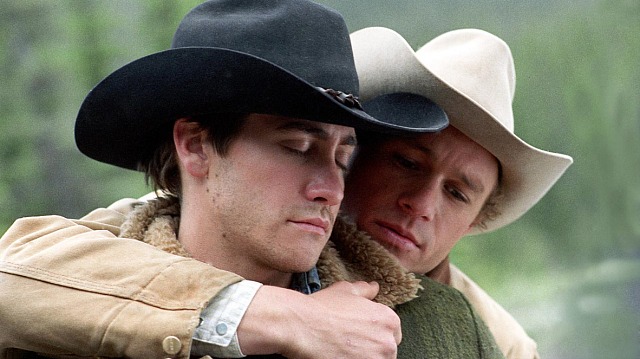
“Stars always represented the underrepresented in the Dream Factory. Daniel-Day Lewis in My Left Foot? Dustin Hoffman in Rain Man? Al Pacino in Scent Of A Woman? Tom Hanks in Philadelphia? I would argue these award-winning performances and movies I mentioned opened eyes and organically helped create empathy and tolerance by finding common ground. Would those actors and studios make these movies now and risk the shaming campaigns?
“Financiers are already inclined to favor films with sequel/blockbuster potential. They’ve now been given one more reason to kick these projects to the curb. This all could have been handled better but like the James Gunn mushroom cloud, these decisions are being made in real time out of fear of the white-hot social media chorus, and the blaring headlines of media eager to fan provocative stories. Deadline had one of its highest traffic days ever when we broke Disney’s dismissal of Gunn last Friday and it hasn’t abated. So I’m not saying we’re immune to the appeal of provocative copy. But I don’t think anybody was helped by the outcome on Gunn and Rub & Tug.”
Bart: “The constraints of the moment would surely have created huge obstacles for many past films that proved ground breaking. Consider Being There: Its message was that the next President of the United States would inevitably be an idiot (Peter Sellers) who could neither read nor write and who did little but watch television. Whoops. Apart from its dicey theme, both Sellers and Hal Ashby, its director, were erratic in their personal pronouncements and would have been annihilated by the social media. As it was, Being There (funded in 1979 by Lorimar Films, of which I was then the President) was rejected by two distributors and suffered from clumsy half-hearted marketing.
Urban Survival Skill Ignored
In the ambitious but mediocre Blindspotting (Lionsgate, now playing), the sympathetic, Oakland-residing Colin (Daveed Diggs) is trying to stay out of trouble over the final three days of his parole status. Early on he’s sitting in a parked truck as he witnesses a beat cop (Officer Molina, played by Ethan Embry) shoot a fleeing dude in the back, apparently killing him. Colin is shocked, naturally, but his failure to mask his feelings told me that Blindspotting would be a second-tier film.
I stayed to the end and I was right — Blindspotting isn’t good enough.
Colin is only a few feet away from Officer Molina and slightly above. If you’ve ever witnessed a violent altercation the first thing you want to do is not throw any kind of shade or judgment upon the aggressor. Don’t look at the cop or, better yet, duck out of sight. What does Colin do? He eyeballs the cop with a look of complete terror. His wide-eyed expression says “my God, you just shot an innocent dude in the back! Soon as I’m outta here I’m gonna report your ass, physical description and all.” Colin is literally staring a hole in the cop’s forehead. Which is the dumbest thing he could possibly do. What if Officer Molina is a hair-trigger type and looking to shoot someone else?
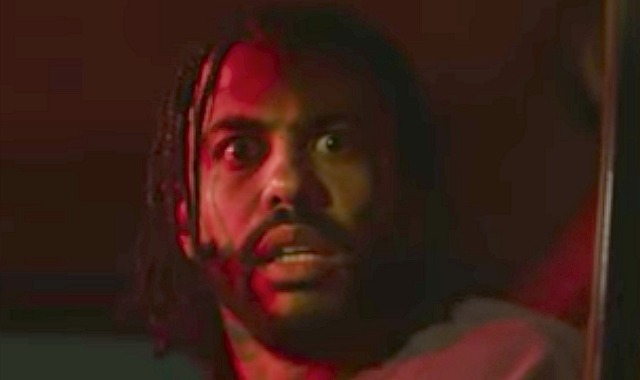
Right then and there I said, “okay, fuck this movie…I can’t abide this level of stupidity.” Diggs (who also produced and cowrote the script) and director Carlos López Estrada decided it was more important to emotionally telegraph how scared and upset Colin is rather than trust the audience to assess the malice on their own. This is what not-good-enough filmmakers and dramatists do — underline, over-explain, assume the audience needs help.
A few minutes later I felt even more turned off by Colin’s longtime best friend Miles (Rafael Casal), a violent, hair-trigger, gun-wielding asshole who’s always threatening to start shit about the slightest personal offense or otherwise do something that might attract the attention of the bulls. Right away you’re wondering “is Colin as stupid as he seems for hanging with this asswipe, or is he just temporarily stupid?”
Casal, a 32 year-old playwright and performance poet, is pretty good at playing an asshole — I’ll give him that. He relies on a broad caricature of Oakland street blackitude — machismo shit talk, constant strut, a mouthful of gold fillings, flashing pistols, drop-of-a-hat hostility, etc.
In the view of Hollywood Reporter critic Todd McCarthy “the volcanically emotive Miles” is “a character so brainlessly compulsive and violent that he becomes pretty hard to take after a while.”
Jump
During the first half-hour of Mission: Impossible — Fallout (Paramount, 7.27), there’s a sequence in which Tom Cruise and Henry Cavill do a HALO jump (high altitude low open) over Paris. Before Monday night’s Lincoln Square screening director Chris McQuarrie explained that the sequence was shot for real — Cruise and a dp with a head-mounted camera did over 100 jumps at magic hour. The sequence is awesome in just about every respect.
Hollywood Elsewhere totally salutes this kind of commitment to realism, and especially Cruise’s moxie. The man is a machine. But let’s also be honest — this scene probably could have been faked with wires and green screen and nobody would have known the difference. Nobody trusts visual effects and stunts any more. Over the last quarter-century the trust factor has been totally blown. Everyone assumes they’re being deceived, at least to some extent. Especially in a big-studio adventure thriller.
In 2005, Werner Herzog said the following about conveying physical reality on-screen: “I tried to explain that I wanted to have the audience know that at the most fundamental level it was real. Today when you see mainstream movies, in many moments, even when it’s not really necessary, there are special effects. It’s a young audience, and at six and seven kids can identify them…they know it was a digital effect, and normally they even know how they were done. But I had the feeling I wanted to put the audience back in the position where they could trust their eyes.”
This is what McQuarrie and Cruise tried to do in the HALO scene — get us to trust the fact that the physical performing is 100% genuine, right there in the moment, three or four miles high. HE fully respects and salutes this effort, even if it doesn’t quite feel all-the-way honest.
Example: Cruise and Cavill’s plan is to parachute right onto the roof of the Grand Palais des Champs-Élysees. No high-pressure undertaking ever goes precisely according to plan, and yet they do exactly this. A more realistic scenario would have one of them missing the Palais and splashing into the Seine, or maybe landing in a nearby city park (Square Jean Perrin) and alarming a couple of pedestrians.
Official Venice Roster
Except for Jennifer Kent‘s The Nightingale and Carlos Reygadas‘ Nuestro Tiempo, all 2018 Venice Film Festival picks had been guessed or spitballed by HE. 12 major competition films plus the two Orson Welles features plus Bradley Cooper‘s A Star Is Born = 15 in all, not counting the mid-levels and peripherals:
Major Competition (12): Roma (d: Alfonso Cuaron), First Man, (d: Damien Chazelle); Doubles Vies (aka EBook) (d: Olivier Assayas); The Sisters Brothers (d: Jacques Audiard), The Ballad of Buster Scruggs (d: Ethan and Joel Coen); 22 July (formerly Norway) (d: Paul Greengrass); Suspiria (d: Luca Guadagnino); Work without Author (d: Florian Henkel Von Donnersmark); The Nightingale (d: Jennifer Kent); The Favorite (d: Yorgos Lanthimos); Peterloo (d: Mike Leigh); Sunset (d: Laszlo Nemes).
Mid-Level Competition (8): Vox Lux (d: Brady Corbet); The Mountain (d: Rick Alverson); Capri-Revolution (d: Mario Martone); What You Gonna Do When The World’s On Fire? (d: Roberto Minervini); Freres Ennemis (d: David Oelhoffen); Neustro Tiempo (d: Carlos Reygadas); At Eternity’s Gate (d: Julian Schnabel); Killing (d: Shinya Tsukamoto).
Special Wellesian, Non-Competitive Events (2): The Other Side Of The Wind (d: Orson Welles); They’ll Love Me When I’m Dead (d: Morgan Neville)
Non-Competitive (5): A Star Is Born (d: Bradley Cooper), Mi Obra Maestra (d: Gaston Duprat); A Tramway in Jerusalem (d: Amos Gitai), Dragged Across Concrete (d: Craig Zahler), Shadow (d: Zhang Yimou).
Wait A Minute…
Variety‘s Kris Tapley is proclaiming that Joel and Ethan Coen‘s The Ballad of Buster Scruggs is no longer a six-part Netflix anthology series but a feature film using an anthology structure? Am I reading this right?
So a few months ago the Coens said to Netflix, “Sorry, guys, but that western anthology series we sold you on, that six-segment concept that might’ve run somewhere between three and six hours…sorry but we prefer the idea of a feature film with a six-chapter structure.”
In other words the Coens wrote six segments that would have minimally run a half-hour (or possibly 45 minutes or an hour) each, and then decided to trim each segment down to, what, 20-minute vignettes for a grand narrative total of 120 minutes plus main titles and end credits? And now they’re debuting the feature at the Venice Film Festival with Tapley and others hailing a new potential Best Picture contender?
10:10 pm update: “Actually, it was always a feature script,” a friend informs. “Then they had the idea to cut it up into a six-part series. One assumes that, in the end, this proved easier said than done.”

I don’t know if this is how Tim Blake Nelson will appear in Joel and Ethan Coen’s The Ballad of Buster Scruggs, but he definitely looks, uhm, ornery and scraggly.
Way back in the summer of ’17, when this here thang was a Netlix anthology series, the six segments were described as follows:
(1) “The Ballad of Buster Scruggs” — The story of a singing cowboy named Buster Scruggs (Tim Blake Nelson);
(2) “Near Algodones” — A high-plains drifter whose own fecklessness dogs his attempts at bank robbery and cattle driving, costarring James Franco, Ralph Ineson and Stephen Root;
(3) “Meal Ticket” — The story of an actor and impresario of a traveling show;
(4) “All Gold Canyon”– A prospector (possibly Tom Waits) happily finds a gold seam but then unhappily finds an evil encroacher;
(5) “The Gal Who Got Rattld” — The story of two trail bosses on the Oregon Trail and a woman on the wagon train who needs the help of one of them and who might be a marriage prospect for the other, w/ Zoe Kazan and Jackamoe Buzzell; and
(6) “The Mortal Remains” — Five very different passengers find themselves on a stagecoach to a mysterious destination w/ Tyne Daly, Saul Rubinek.
Liam Neeson and Brendan Gleeson are also listed as costars.
Here’s the thang: With the exception of Franco and Neeson, none of the Buster Scruggs cast members are leads — they could all be compassionately described as off-center, eccentric, funny-looking character types. So right off the top the film is charisma-challenged. No Josh Brolin, no Javier Bardem, no Frances McDormand, no Tommy Lee Jones, no George Clooney, no Jeff Bridges, no Hailee Steinfeld.
Official Coen statement: “We’ve always loved anthology movies, especially those films made in Italy in the ’60s” — i.e., RoGoPaG — “which set side-by-side the work of different directors on a common theme. Having written an anthology of Western stories we attempted to do the same, hoping to enlist the best directors working today. It was our great fortune that they both agreed to participate.”

